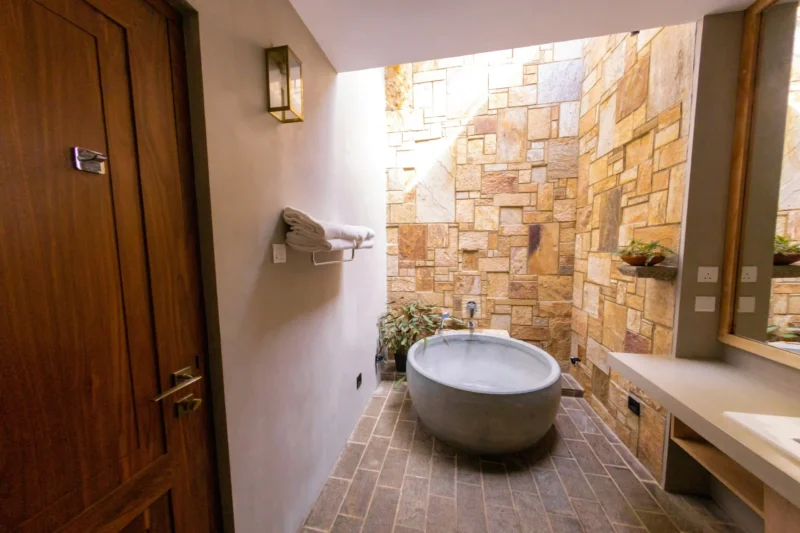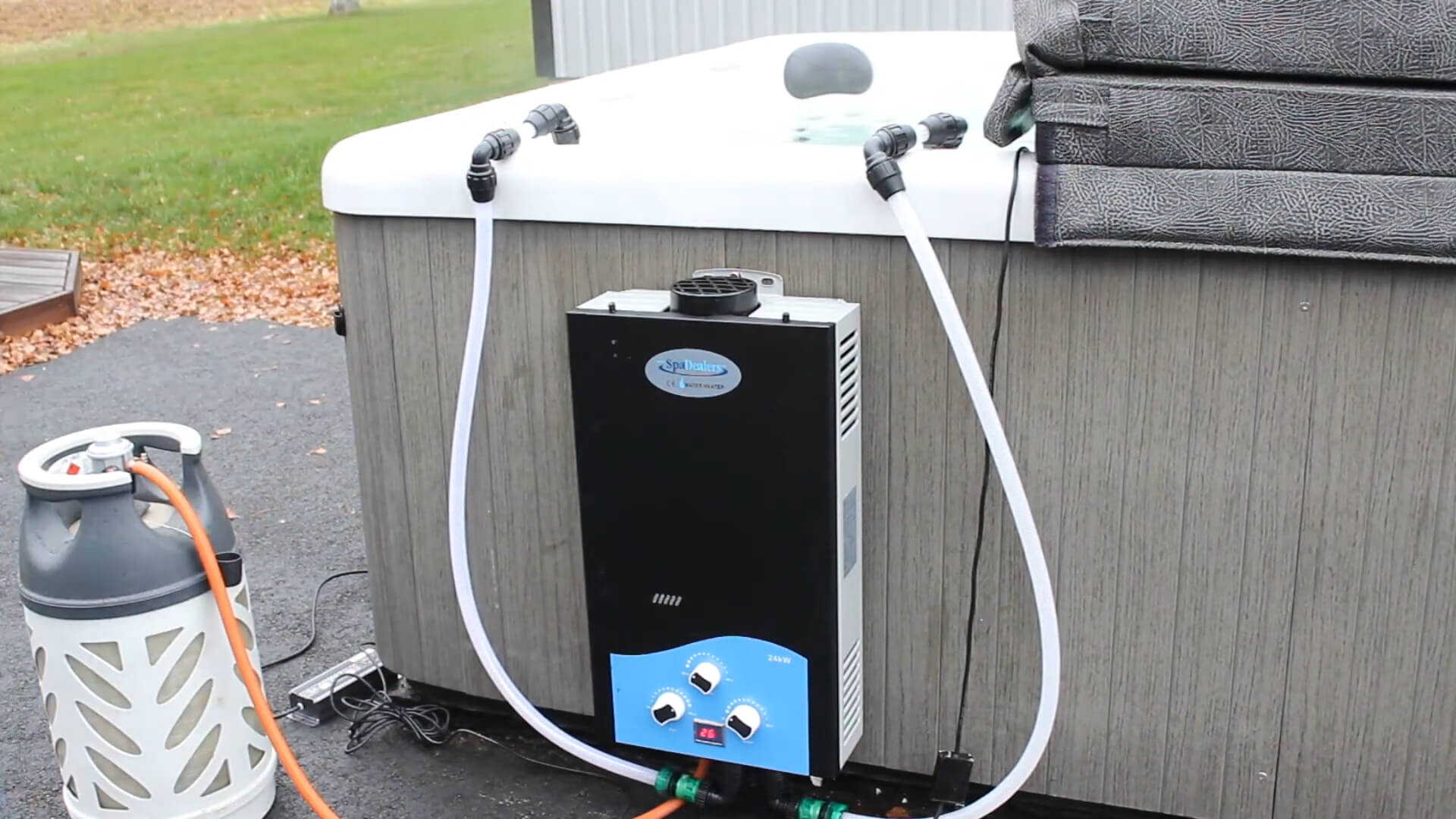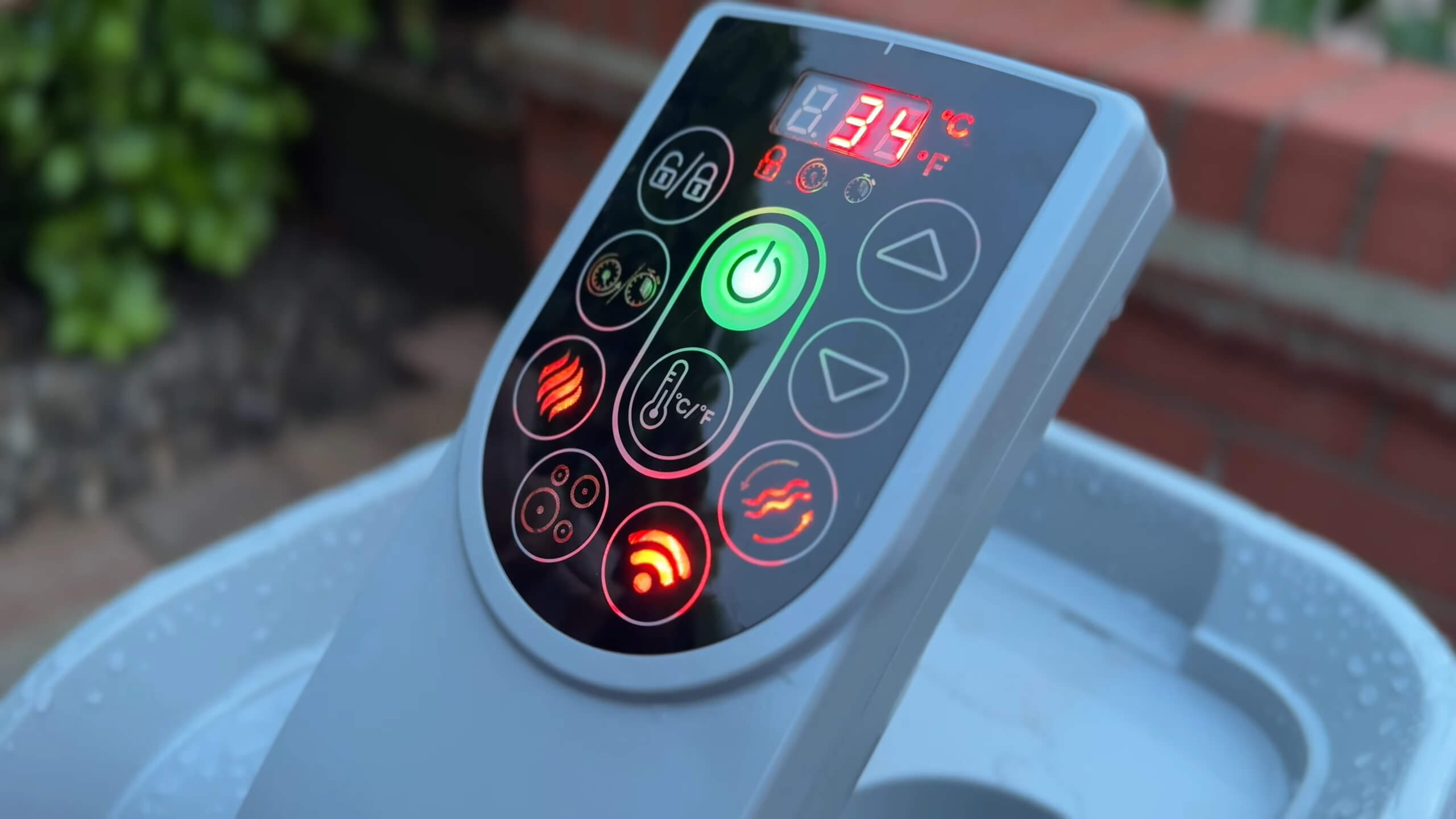
Share Post:
So you’re thinking about getting a hot tub and trying to figure out if an electric or natural gas option is the way to go. At first, it seems like choosing between hot tubs is a simple choice, but once you start digging into the details, it gets more complicated. You want something that heats up quickly, doesn’t rack up a huge energy bill, and is easy to maintain. I understand how confusing it can be.
Let’s break it down in a way that actually makes sense so you can figure out which option gives you the best bang for your buck.
Key Differences
| Feature | Electric Hot Tub | Natural Gas Hot Tub |
|---|---|---|
| Heating Speed | Slower, takes hours to reach desired temperature | Faster, heats 1-2 degrees per minute |
| Energy Efficiency | Close to 100% efficient, better for mild climates | About 80% efficient, more efficient in colder climates |
| Installation Cost | Lower, simpler to install, no need for external venting | Higher, requires professional installation of gas lines |
| Maintenance Cost | Lower, replacing heating elements is inexpensive | Higher, replacing gas heaters is costly |
| Safety | Fewer risks, primarily electrical safety concerns | Potential risks from gas leaks and carbon monoxide |
| Best For | Smaller, well-insulated hot tubs in mild climates | Larger hot tubs, poorly insulated tubs, or colder climates |
Heating Speed and User Experience
When it comes to how quickly a hot tub heats up, the difference between electric and natural gas models really stands out. This difference can significantly impact your overall enjoyment and convenience.
Natural Gas Hot Tubs
Natural gas hot tubs are the choice for those who want instant gratification. They heat water rapidly, raising the temperature by 1-2 degrees per minute. This means that even if you decide at the last minute to take a soak, your hot tub will be ready in no time.
Quick heating is particularly beneficial in colder climates, where keeping water warm is more challenging. You can keep the water at a lower temperature when the tub isn’t in use and still heat it up quickly when needed, which can save on energy costs without sacrificing convenience.
Electric Hot Tubs
Electric hot tubs, while effective, take their time to heat up. If you’re okay with planning ahead and letting your hot tub warm up for a few hours before use, an electric model can still meet your needs. However, the slower heating speed means that spontaneous soaks require a bit more patience.
In milder climates, where heating demands aren’t as high, the slower speed may not be a significant drawback, but in colder areas, it could be a deal-breaker for those who value quick access to a hot soak.
Energy Efficiency
Energy efficiency is where electric hot tubs often shine, but the choice between electric and natural gas depends heavily on how and where you plan to use your hot tub.
Electric Hot Tubs
Electric heaters are generally more efficient, converting nearly all the energy they consume into heat, achieving close to 100% efficiency. This efficiency is especially beneficial in milder climates or if your hot tub is well-insulated and covered when not in use.
If your electricity costs are reasonable, the ongoing operational costs for an electric hot tub can be relatively low, with monthly expenses ranging between $15 to $25, depending on the size of the hot tub and usage patterns.
Natural Gas Hot Tubs
Natural gas heaters, while slightly less efficient (around 80%), can be more cost-effective in the long run, particularly in colder climates where maintaining heat is more challenging. Gas heaters can heat the water quickly, reducing the amount of time the heater needs to operate.
However, the cost-effectiveness of gas largely depends on local gas prices and availability. In some regions, natural gas may be significantly cheaper than electricity, making it a more economical option for year-round use, especially if you frequently heat your hot tub from a lower resting temperature.
Climate as a Factor
If you live in a colder climate or use your hot tub during the winter months, a natural gas heater might be the better choice. Its ability to quickly bring the water up to temperature can save you both time and money, as it doesn’t need to work as hard to maintain heat.
In contrast, electric heaters may struggle to keep up in freezing temperatures, leading to higher energy consumption and potentially longer heating times.
Installation Costs and Complexity
When it comes to installation, the choice between an electric and a natural gas hot tub can significantly impact your budget and the complexity of the setup.
Electric Hot Tubs
Electric hot tubs are generally easier and less expensive to install. Most electric models only require a standard electrical outlet (110V/15A) or a dedicated 220V/50A line, depending on the model. If your home already has the necessary wiring, the installation process is straightforward, often involving just a plug-and-play setup.
The installation costs are typically low, and if you need to upgrade your electrical system, it usually won’t break the bank. However, you should factor in the cost of hiring a licensed electrician if your setup requires a dedicated line, which can add a few hundred dollars to your total cost.
Natural Gas Hot Tubs
Installing a natural gas hot tub is more complex and costly. The initial price for the gas heater itself is higher, often exceeding $1,000. Beyond that, the process requires running a gas line from your home’s natural gas meter or a propane tank to the hot tub. This involves trenching, laying pipes, and ensuring proper ventilation, as gas heaters need to be installed outdoors with access to fresh air.
The cost of running a gas line can vary significantly depending on the distance and any obstacles, but it often surpasses the cost of the heater itself. Additionally, you’ll need to hire a certified gas contractor, which adds to the overall expense.
Maintenance and Repair Costs
Maintenance and repair are key factors to consider when choosing between an electric and a natural gas hot tub. Each type has its own set of challenges and costs associated with keeping it in good working order.
Electric Hot Tubs
Electric hot tubs are generally known for being easier and less expensive to maintain. The components, such as the heating elements, are relatively simple and straightforward. If a heating element fails, replacement is typically affordable, often costing a few hundred dollars or less.
The simplicity of electric systems means that repairs are usually quick, and parts are readily available. Routine maintenance, such as checking connections and ensuring the heating element is functioning correctly, is minimal, making electric hot tubs a low-maintenance option overall.
Natural Gas Hot Tubs
Natural gas hot tubs, while offering faster heating, come with higher maintenance and repair costs. The gas heater itself is more complex and involves components like gas lines, burners, and exhaust systems that require regular inspection to ensure safe operation.
If a gas heater fails, replacement costs can be significant, often exceeding $1,000. Additionally, any issues with the gas line or connections can require costly repairs by a certified technician.
Regular maintenance is crucial to prevent problems such as gas leaks or carbon monoxide buildup, making the ongoing upkeep more involved and expensive than with electric systems.
The Best Long-Term Choice
When considering which hot tub is the best for the long haul, the decision hinges on balancing upfront costs, ongoing maintenance, and energy efficiency. For those who prioritize lower maintenance and operational costs over time, an electric hot tub is the better long-term choice.
It’s easier to maintain, has fewer expensive parts to replace, and is more energy-efficient in milder climates. However, if rapid heating is crucial and you’re in a colder climate, a natural gas hot tub might justify its higher installation and maintenance costs in the long run.
FAQs
How much does it cost to run an electric hot tub per month?
The cost to run an electric hot tub per month typically ranges between $15 to $25, depending on the size of the tub, the local electricity rates, and how often it’s used. Factors like insulation and the quality of the cover can also impact these costs.
Can I convert an electric hot tub to a natural gas hot tub?
Converting an electric hot tub to natural gas is possible but not recommended due to the complexity and cost involved. The process requires purchasing a gas heater, installing a gas line, and making significant modifications to the hot tub. Additionally, this conversion may void the manufacturer’s warranty.
How long does it take to heat a hot tub with natural gas?
A natural gas hot tub can heat the water by 1-2 degrees per minute, depending on the size of the hot tub and the starting temperature. This means that in many cases, the hot tub can be ready to use in under an hour.
Is it safe to leave my hot tub running all the time?
Yes, it is generally safe to leave your hot tub running all the time, especially if it’s an electric hot tub. Keeping it running maintains the temperature and reduces the time it takes to heat up when you’re ready to use it. Just ensure that the cover is always on when not in use to maintain energy efficiency.
What happens if my natural gas hot tub has a gas leak?
If you suspect a gas leak in your natural gas hot tub, you should immediately turn off the gas supply and contact a professional to inspect and repair the issue. Gas leaks can be dangerous, leading to fire hazards or carbon monoxide poisoning, so they must be addressed promptly by a certified technician.
Which hot tub is better for cold climates?
For cold climates, a natural gas hot tub is often the better choice because it heats water faster, making it more efficient at maintaining the desired temperature even in freezing conditions. However, it’s important to factor in the higher installation and maintenance costs associated with natural gas systems.
Conclusion
So, after going through all the details, it really comes down to what matters most to you. If you want quick heating and don’t mind spending more upfront and on maintenance, a natural gas hot tub could be your best option, especially if you live in a colder area.
But if you’re more focused on saving energy over time and want something easier to maintain, an electric hot tub is probably the smarter choice. It might take longer to heat, but it’s more efficient in milder climates.
Related Posts:
- Electric vs Natural Gas Hot Tub - Which is Better?
- Byoma vs Ordinary Milky Toner: Which Is Better for…
- Hot Tub vs Sauna: Which One is Right for You?
- Toner vs. Essence vs. Serum – Which Belongs in Your Routine?
- Chemical Peel vs. Microdermabrasion - Which One Is…
- What’s the Perfect Temperature for Your Hot Tub?













